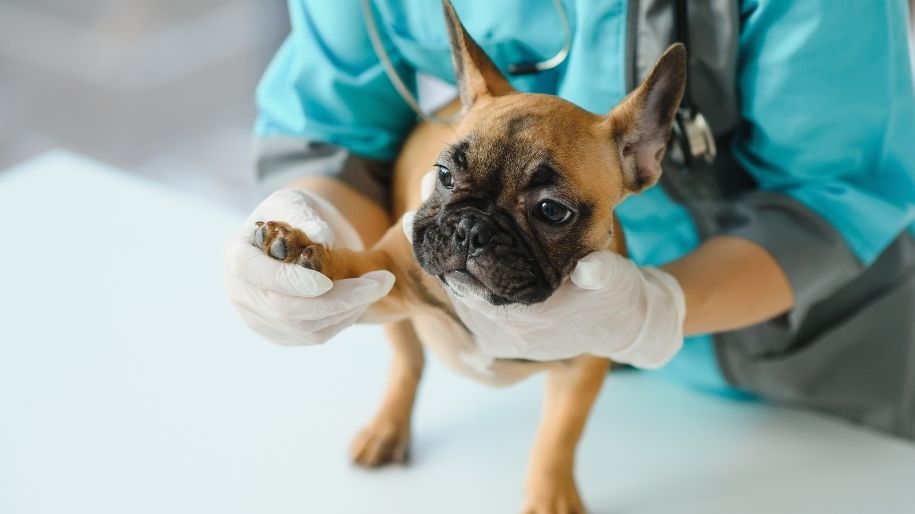PET INSURANCE
During the enrollment process, some pet insurance companies require a physical exam of your pet or ask for your pet’s veterinary medical records before approving your policy. However, MetLife Pet doesn't require an exam.
Vet visits can be a source of stress for cats, dogs, and pet parents alike. Some pets may take anxiety medication just to make it through an appointment. At MetLife Pet Insurance, we want to help minimize this stress when it comes to obtaining coverage.
Let’s take a closer look at what is and isn’t required with a MetLife Pet policy and why it might be the right choice for you.
You Don’t Need an Enrollment Exam to Get MetLife Pet Insurance
MetLife Pet Insurance Doesn’t Require an Exam to Enroll
MetLife Pet doesn’t include an initial exam with vet records in our pet insurance enrollment requirements. Your pet is eligible to enroll in a policy without needing to submit proof of a recent medical exam.
This might be a relief for pet parents whose furry friends don’t enjoy going to the vet. Other pet insurance providers may require a medical exam before they’ll enroll your pet, which could add an extra, stressful step in the process — and delay getting coverage.
When Are Vet Records Needed?
While an exam and vet records aren’t needed to enroll in a policy, MetLife Pet does require the past 12 months of vet records when you submit your first claim. These vet records are often called SOAP (subjective, objective, assessment, and plan) notes.
SOAP notes are different from the discharge notes your vet gives you after a visit. They’re detailed documentation of your pet’s condition and treatment. Insurance companies use these to make sure any treatments are for a covered injury or illness. That’s because your pet’s vet records and SOAP notes may reveal pre-existing conditions.
Many pet insurers don’t cover pre-existing conditions — which are injuries or illnesses that happened prior to enrolling in a pet insurance policy — or they only cover them under certain circumstances. For group policyholders who have switched from a previous provider to MetLife Pet, we can provide coverage for pre-existing conditions that were covered under the other provider.1
If you’ve adopted your pet and don’t have 12 months of vet records, we’ll need the adoption paperwork and any available vet records that came with your pet when you submit your first claim.
What Else Do You Need to Know About Enrollment?
In addition to pre-existing conditions, there are a couple of other things you may need to know about for pet insurance enrollment.
Waiting periods
Pet parents may want pet insurance that doesn’t require an exam for a number of reasons — like wanting their pet to be insured as quickly as possible to be prepared for whatever comes. MetLife Pet can help you get your pet covered in a timely fashion.
We offer a 0-day waiting period on accidents, as well as expenses covered by our optional Preventive Care plan, which is one of the shortest waiting periods on the market. Our illness waiting period is fairly standard at 14 days.2
Once enrolled, your pet won’t be eligible for reimbursement on covered expenses until any applicable waiting periods are over.3
Policy exclusions
Only expenses covered under your pet’s policy are eligible for reimbursement.3 It’s important to understand what the exclusions are, so you can make sure the policy you’re enrolling in is right for your and your pet’s needs.
MetLife Pet Insurance Makes Enrolling Your Pet Easier
At MetLife Pet, we get it. Pets are like family, and we know how difficult it can be when a member of the family gets sick or injured. So we don’t want to overcomplicate things with exam requirements for pet insurance.
Instead, just submit your vet records at the time of your first claim. We’ll be there with comprehensive plans, robust coverage, and a team of caring and passionate pet advocates when you and your pet need us most. This can help make pet insurance worth it for so many pet parents.
MetLife Pet’s simple enrollment process is just the start. We can help you cover vet bills for exam fees, diagnostics, and treatments for injuries and illnesses. Get a free quote to see your custom policy price today.
Help Keep Your Pet Healthy and Happy
855-270-7387


